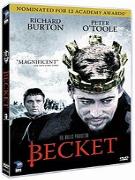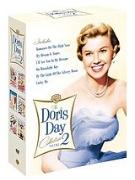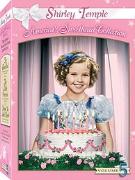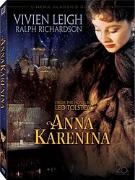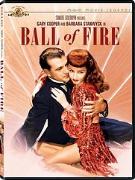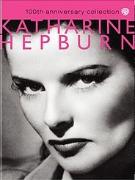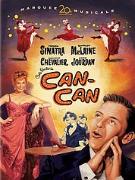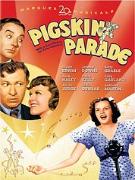
Knight at HOME at the Movies
Classics Roundup (Late Spring 2007)
Get ready to travel all the way from 1933 to 1964 in this wide ranging classics roundup.
Get ready to travel all the way from 1933 to 1964 in this wide ranging classics roundup.
In honor of what would have been perhaps cinema’s longest surviving movie star Kate Hepburn’s 100th birthday Warner
Home Entertainment has released the 6-disc Katharine Hepburn Collection. The set includes 1933’s Morning Glory
(her first Oscar win), gay director George Cukor’s sexually ambiguous Sylvia Scarlet from 1936 with Cary Grant and
Hepburn in drag as a very fetching young man through much of the film and Hepburn and Cukor’s final effort, the TV
version of The Corn Is Green in 1979. There’s also three Hepburn 1940s vehicles: Vincente Minnelli’s tense psychological
thriller Undercurrent (1946) with Robert Taylor and Robert Mitchum, Without Love (1945), a minor comedy with Spencer Tracy
and co-star Lucille Ball and Dragonseed (1944), the weakest link in the set with Hepburn as a Chinese peasant! Don’t let
that put you off this otherwise stellar collection that honors one of cinema’s most fascinating stars. Extras include vintage
shorts and cartoons that are programmed as the lead-in to each feature to recreate the actual movie-going experience of
the time – a charming idea that has been a staple of many of the WB collections.
A winning Doris Day Collection Volume 1 included an assortment of her 50s musicals and 60s comedies. Last month Warner
Home Entertainment followed that up with the release of the 6-disc Doris Day Collection Volume 2 that focuses on
her early musicals and clearly reveals the reason for Day’s instant and long lasting stardom. Aside from her honeyed,
emotion laden voice and fresh scrubed, California blonde sunny appearance, crack comedic timing and ability to tear up at
a moment’s notice, not to mention her dance skills, the camera captures that certain Something. Whatever “it” is Day
had it in spades as is readily evident from her debut feature, the first disc in the set, the frothy Romance on the High Seas
from 1948 in which Day is hired to take a cruise and impersonate a rich society dame (Janis Paige) so the dame can stay
at home and spy on her husband who she suspects of philandering. Day belts out the Oscar winning “It’s Magic” among
other tunes and easily convinces as a spunky show girl. Third billed, Day stole the picture and went on to star in the other
five titles in the set. These include My Dream Is Yours, a serviceable backstage story with a memorable animated Bugs
Bunny sequence in which Day is again re-teamed with Jack Carson from Romance, I’ll See You in My Dreams, an easy going
musical biopic of the “Making Whoopee,” “It Had To Be You” lyricist Gush Kahn (essayed by Danny Thomas) (Day plays
his wife), and Lucky Me from 1955 in which Day plays the star of a nightclub act that is anything but lucky trying to break
into Las Vegas. She stars with Bob Cummings and gets memorable support from Nancy Walker and Phil Silvers.
Other than Romance, the high points of the set are On Moonlight Bay from 1951 and it’s equally charming sequel, 1953’s By
the Light of the Silvery Moon. Highly reminiscent of Meet Me in St. Louis and loaded with the same nostalgic charm of the
Garland classic these two films with their simple storylines and vintage musical numbers are also superior examples of
studio artifice at its height. As one watches the simple plots unfold – tomboy Doris is tamed by heartthrob Gordon
MacRae, for example, one is aware of the camera crew just out of range, the studio lights providing the impossibly bright
sunlight, the costumes and sets perfectly recreated and blended in their pastel hues, or the wind machines blowing the
leaves just so on a magical summer night. The cast in both films are the same – Day and MacRae, Leon Ames as the
stern father (virtually repeating his St. Louis role), Rosemary DeCamp as his resigned but warm wife (a role she repeated
in the That Girl series), Mary Wickes as the acidic housekeeper (another nod to St. Louis and the part played by Marjorie
Main). The final character is the adolescent brother played by Billy Gray who was also memorable as Patricia Neal’s son in
The Day the Earth Stood Still. Some of the titles include brief making of featurettes, photo galleries and more. A delight
for musical fans, a must for Doris Day devotees.
Fans of Day are also advised to pick up Warner Home Entertainment's latest edition to their stellar Signature Collection.
The 5-disc James Cagney Signature Collection includes Day and MacRae supporting Cagney in 1950’s The West
Point Story, a “let’s put on a show” musical set at the military academy. Ironically, the diminutive actor, noted for his
tough guy roles that included the justly famed Little Caesar (remade for a latter generation as Scarface) was at heart a
song and dance man and proved as much with his Oscar winning turn in 1942’s Yankee Doodle Dandy. That classic has
already been given the deluxe treatment by Warner so it’s nice to have West Point along with the four other lesser known
Cagney films that make up this set. The pugnacious Cagney also stars in Captains of the Clouds, a story of Canadian
pilots during WWII and The Fighting 69th, a WWI picture with Cagney teamed as usual with Pat O’Brien. Both are well
made war films that offer plenty of action and drama but I preferred the south of the border romantic dramedy Torrid Zone
in which Cagney is paired with the always welcome Ann Sheridan as a down on her luck saloon singer struck in the Tropics.
Finally, there’s 1941’s The Bride Came C.O.D. the one film in the set of particular interest to gay audiences: Cagney costars
with Bette Davis who plays a spoiled heiress whose father, Eugene Pallatte, is determined to stop her before she marries a
bandleader (Jack Carson) with a wandering eye. The film, while not exactly a gut buster has moments of charm (though
the repeated gag of Davis landing on a cactus gets a bit much). Though Cagney and Davis often seem to be in two
different movies stylistically this was their only screen pairing and he was one of her few leading men that projects just as
much force and personality on screen as she does. A batch of vintage extras round out each of the discs.
In late March 20th Century Fox released the fifth in their series of Shirley Temple films. The Shirley Temple
America’s Sweetheart Collection Volume Five has just three of the little triple threat’s star vehicles, 1934’s Stand
Up and Cheer which focuses on the Depression and finds little Shirley as an ambassador of good cheer, The Little Princess
which came near the end of her tenure at Fox and finally 1940’s The Blue Bird, the offbeat fantasy that Fox made in
response to the gargantuan success of MGM’s The Wizard of Oz. The Little Princess is the one bona fide classic of the trio in
which Temple takes the lead in the Frances Hodgson Burnett twist on the Cinderella story of the high spirited English girl
who has grown up in India but who is left at a lavish boarding school while her father goes off to fight in WWI. When word
comes that her father has been killed, the school’s villainous headmistress forces poor little Shirley to become a servant
and scrub the floors! It’s a charming version (though I must admit a preference for the lavish remake from director
Alfonso Cuaron which offered my pal Rusty Schwimmer a nice comedic role). I’m rather taken with the strange Blue Bird in
which Temple and her brother set off to find the blue bird of happiness in order to save their family from economic
hardship. Passing through a variety of strange, fantastic lands (and equally strange characters), Shirley and company
(they include Gale Sondergaard as a human incarnation of their pet cat) engage in what seems like a cross between Alice
in Wonderland, Oz, and the ballet sequence from The Red Shoes. Much of the action seems to be taking place under water
and the film's thudding pace is strangely mesmerizing. And it’s all shot in that freakish looking Technicolor of the period
(The Little Princess is colorized, Stand Up is in black and white).
Richard Harris and Peter O’Toole act up a storm in 1964’s Beckett from MPI Home Video which has gotten a beautiful
restoration thanks to Martin Scorsese's film foundation and their restoration efforts. This excellent historical drama was
nominated for 12 Academy Awards (the script won an Oscar for Edward Anhalt) and relates the story of King Henry II
(O'Toole) and how his close friendship with his former partner in carousing and womanizing, Thomas Beckett (Burton)
turned sour. When Henry II coerced his friend to become the head of the church with the hopes that with this
appointment, he’d also have an ally, he couldn’t have been more wrong. Instead, Beckett takes the appointment
seriously and is soon at odds with his former best friend with inevitably loyalty and friendship shoved aside in the name of
power and the monarchy. With O’Toole and Burton at the helm as one would suspect, there’s plenty of scenery-chewing
and this is more a war of words rather than action sequences as one might suspect. But the two and a half hour film with
an all-star English cast flies by and this restoration is wonderful to have – all the pomp and circumstance – not to mention
the color – is back in this stellar edition which includes a full length commentary from O’Toole, two vintage interviews with
Burton that are fascinating, a couple of new featurettes with the film's composer Laurence Rosenthal (whose Gregorian
chant based score was Oscar nominated) and the film’s editor, Anne Coats (also given an Oscar nod).
Home Entertainment has released the 6-disc Katharine Hepburn Collection. The set includes 1933’s Morning Glory
(her first Oscar win), gay director George Cukor’s sexually ambiguous Sylvia Scarlet from 1936 with Cary Grant and
Hepburn in drag as a very fetching young man through much of the film and Hepburn and Cukor’s final effort, the TV
version of The Corn Is Green in 1979. There’s also three Hepburn 1940s vehicles: Vincente Minnelli’s tense psychological
thriller Undercurrent (1946) with Robert Taylor and Robert Mitchum, Without Love (1945), a minor comedy with Spencer Tracy
and co-star Lucille Ball and Dragonseed (1944), the weakest link in the set with Hepburn as a Chinese peasant! Don’t let
that put you off this otherwise stellar collection that honors one of cinema’s most fascinating stars. Extras include vintage
shorts and cartoons that are programmed as the lead-in to each feature to recreate the actual movie-going experience of
the time – a charming idea that has been a staple of many of the WB collections.
A winning Doris Day Collection Volume 1 included an assortment of her 50s musicals and 60s comedies. Last month Warner
Home Entertainment followed that up with the release of the 6-disc Doris Day Collection Volume 2 that focuses on
her early musicals and clearly reveals the reason for Day’s instant and long lasting stardom. Aside from her honeyed,
emotion laden voice and fresh scrubed, California blonde sunny appearance, crack comedic timing and ability to tear up at
a moment’s notice, not to mention her dance skills, the camera captures that certain Something. Whatever “it” is Day
had it in spades as is readily evident from her debut feature, the first disc in the set, the frothy Romance on the High Seas
from 1948 in which Day is hired to take a cruise and impersonate a rich society dame (Janis Paige) so the dame can stay
at home and spy on her husband who she suspects of philandering. Day belts out the Oscar winning “It’s Magic” among
other tunes and easily convinces as a spunky show girl. Third billed, Day stole the picture and went on to star in the other
five titles in the set. These include My Dream Is Yours, a serviceable backstage story with a memorable animated Bugs
Bunny sequence in which Day is again re-teamed with Jack Carson from Romance, I’ll See You in My Dreams, an easy going
musical biopic of the “Making Whoopee,” “It Had To Be You” lyricist Gush Kahn (essayed by Danny Thomas) (Day plays
his wife), and Lucky Me from 1955 in which Day plays the star of a nightclub act that is anything but lucky trying to break
into Las Vegas. She stars with Bob Cummings and gets memorable support from Nancy Walker and Phil Silvers.
Other than Romance, the high points of the set are On Moonlight Bay from 1951 and it’s equally charming sequel, 1953’s By
the Light of the Silvery Moon. Highly reminiscent of Meet Me in St. Louis and loaded with the same nostalgic charm of the
Garland classic these two films with their simple storylines and vintage musical numbers are also superior examples of
studio artifice at its height. As one watches the simple plots unfold – tomboy Doris is tamed by heartthrob Gordon
MacRae, for example, one is aware of the camera crew just out of range, the studio lights providing the impossibly bright
sunlight, the costumes and sets perfectly recreated and blended in their pastel hues, or the wind machines blowing the
leaves just so on a magical summer night. The cast in both films are the same – Day and MacRae, Leon Ames as the
stern father (virtually repeating his St. Louis role), Rosemary DeCamp as his resigned but warm wife (a role she repeated
in the That Girl series), Mary Wickes as the acidic housekeeper (another nod to St. Louis and the part played by Marjorie
Main). The final character is the adolescent brother played by Billy Gray who was also memorable as Patricia Neal’s son in
The Day the Earth Stood Still. Some of the titles include brief making of featurettes, photo galleries and more. A delight
for musical fans, a must for Doris Day devotees.
Fans of Day are also advised to pick up Warner Home Entertainment's latest edition to their stellar Signature Collection.
The 5-disc James Cagney Signature Collection includes Day and MacRae supporting Cagney in 1950’s The West
Point Story, a “let’s put on a show” musical set at the military academy. Ironically, the diminutive actor, noted for his
tough guy roles that included the justly famed Little Caesar (remade for a latter generation as Scarface) was at heart a
song and dance man and proved as much with his Oscar winning turn in 1942’s Yankee Doodle Dandy. That classic has
already been given the deluxe treatment by Warner so it’s nice to have West Point along with the four other lesser known
Cagney films that make up this set. The pugnacious Cagney also stars in Captains of the Clouds, a story of Canadian
pilots during WWII and The Fighting 69th, a WWI picture with Cagney teamed as usual with Pat O’Brien. Both are well
made war films that offer plenty of action and drama but I preferred the south of the border romantic dramedy Torrid Zone
in which Cagney is paired with the always welcome Ann Sheridan as a down on her luck saloon singer struck in the Tropics.
Finally, there’s 1941’s The Bride Came C.O.D. the one film in the set of particular interest to gay audiences: Cagney costars
with Bette Davis who plays a spoiled heiress whose father, Eugene Pallatte, is determined to stop her before she marries a
bandleader (Jack Carson) with a wandering eye. The film, while not exactly a gut buster has moments of charm (though
the repeated gag of Davis landing on a cactus gets a bit much). Though Cagney and Davis often seem to be in two
different movies stylistically this was their only screen pairing and he was one of her few leading men that projects just as
much force and personality on screen as she does. A batch of vintage extras round out each of the discs.
In late March 20th Century Fox released the fifth in their series of Shirley Temple films. The Shirley Temple
America’s Sweetheart Collection Volume Five has just three of the little triple threat’s star vehicles, 1934’s Stand
Up and Cheer which focuses on the Depression and finds little Shirley as an ambassador of good cheer, The Little Princess
which came near the end of her tenure at Fox and finally 1940’s The Blue Bird, the offbeat fantasy that Fox made in
response to the gargantuan success of MGM’s The Wizard of Oz. The Little Princess is the one bona fide classic of the trio in
which Temple takes the lead in the Frances Hodgson Burnett twist on the Cinderella story of the high spirited English girl
who has grown up in India but who is left at a lavish boarding school while her father goes off to fight in WWI. When word
comes that her father has been killed, the school’s villainous headmistress forces poor little Shirley to become a servant
and scrub the floors! It’s a charming version (though I must admit a preference for the lavish remake from director
Alfonso Cuaron which offered my pal Rusty Schwimmer a nice comedic role). I’m rather taken with the strange Blue Bird in
which Temple and her brother set off to find the blue bird of happiness in order to save their family from economic
hardship. Passing through a variety of strange, fantastic lands (and equally strange characters), Shirley and company
(they include Gale Sondergaard as a human incarnation of their pet cat) engage in what seems like a cross between Alice
in Wonderland, Oz, and the ballet sequence from The Red Shoes. Much of the action seems to be taking place under water
and the film's thudding pace is strangely mesmerizing. And it’s all shot in that freakish looking Technicolor of the period
(The Little Princess is colorized, Stand Up is in black and white).
Richard Harris and Peter O’Toole act up a storm in 1964’s Beckett from MPI Home Video which has gotten a beautiful
restoration thanks to Martin Scorsese's film foundation and their restoration efforts. This excellent historical drama was
nominated for 12 Academy Awards (the script won an Oscar for Edward Anhalt) and relates the story of King Henry II
(O'Toole) and how his close friendship with his former partner in carousing and womanizing, Thomas Beckett (Burton)
turned sour. When Henry II coerced his friend to become the head of the church with the hopes that with this
appointment, he’d also have an ally, he couldn’t have been more wrong. Instead, Beckett takes the appointment
seriously and is soon at odds with his former best friend with inevitably loyalty and friendship shoved aside in the name of
power and the monarchy. With O’Toole and Burton at the helm as one would suspect, there’s plenty of scenery-chewing
and this is more a war of words rather than action sequences as one might suspect. But the two and a half hour film with
an all-star English cast flies by and this restoration is wonderful to have – all the pomp and circumstance – not to mention
the color – is back in this stellar edition which includes a full length commentary from O’Toole, two vintage interviews with
Burton that are fascinating, a couple of new featurettes with the film's composer Laurence Rosenthal (whose Gregorian
chant based score was Oscar nominated) and the film’s editor, Anne Coats (also given an Oscar nod).
MGM has at long last released the much loved Barbara Stanwyck-Gary Cooper fizzy comedy classic Ball of Fire. This
stellar 1941 effort from director Howard Hawks is so dated that its “hep” language is refreshing and funny. Basically, a
wartime retelling of Snow White and the Seven Dwarfs, the story focuses on Stany as Sugarpuss O’Shea, a nightclub
performer (who does an unforgettable “Drum Boogie” with the manic Gene Krupa – watch for the reprise where he plays
the matchsticks) who encounters a professor of language (Coop) who is working on an encyclopedia with his fellow
eggheads (they look like a batch of modern day film critics!). Stany’s boyfriend, a gangster played by Dana Andrews,
needs her to hide-out from the cops so she ends up doing so with Coop and the boys in exchange for lessons in modern
day slang. Naturally, the mash up of these two worlds leads to a slew of comedic situations and romance. The film
expertly plays on Stanwyck’s renowned versatility and Cooper’s innate and irresistible sexiness. The disc from MGM
doesn't look the greatest or offer any extras but it’s great to finally have this classic on DVD.
Though Garbo’s combination of moroseness and beauty would seem to give her the edge in portraying the suffering for
love Anna Karenina in her 1935 star effort, I have always much preferred the 1948, Julian Duvivier directed version with
Vivien Leigh in the title role. Leigh has the requisite beauty and charm of Tolstoy’s character along with the melancholy
but unlike Garbo she brings her famous passionate intensity to the role. Like the Garbo-MGM version Duvivier boils down
the book to its core leaving us with a highfalutin’ melodrama that works superbly on the screen. It also looks superb –
the upper crust Russian society with their elegant yet repressed manners and lavish lifestyle is perfectly realized as is the
bitter cold, swirling snows and the omnipresence of that fateful train. A romantic cautionary tale to be sure, this Anna also
has the air of a Russian fairytale. Leigh is given a marvelous supporting cast (Ralph Richardson plays the high minded
dullard of a husband) and sumptuous sets and photography. My main quibble is once again with the casting of Count
Vronsky. I have yet to see any film version of this classic cast a Vronsky that combines breathtaking good looks with the
casual morals of a lecherous rake and this version doesn’t do it either. One didn’t believe Garbo would risk all for another
hour with Frederic March and so it is with Kieron Moore who essays the part here. But imagine Brando, who would pair off
with Leigh just three years later in A Streetcar Named Desire, in the part! This 1948 version of Anna Karenina is now
available from 20th Century Fox as part of their classics line and has a number of extras that dovetail nicely with the film.
There’s a long biographical featurette on Tolstoy, another on the Russian writer’s legacy, a stills gallery, and a welcome
restoration comparison in which one can truly appreciate the beautiful work Fox has done on the sumptuous black and
white cinematography. I know a longer version of the film exists but the pacing feels just right here and I’m glad Fox
opted for this truncated version.
Paramount Home Video has every right to also be proud of their restoration work on To Catch a Thief – Special
Collector’s Edition. This 1955 Alfred Hitchcock charmer with Cary Grant and Grace Kelly as a reformed jewel thief and a
glamorous though petulant heiress has suffered in the previous DVD edition from a washed out, scratchy print that
Paramount has now gorgeously restored. Much of the film’s nighttime rooftop scenes in which the jewel thief, “The Cat,”
goes to work in the French Riviera, were hard or impossible to discern in the previous edition but Paramount’s lustrous
work has changed that. The film’s other major scenes – especially the flower market and the costume ball – are
noticeably more colorful as well. Not to mention that infamous scene between Grant and Kelly as they watch the
fireworks. The disc includes the previously available making of featurettes on the laserdisc. This is a Special Edition worth
trading up for – or finally adding to your collection.
Two years after the stunning success of Vincente Minnelli’s Gigi (9 Oscars in all), Fox hoped to strike gold with their own
French musical and bet on Can-Can. With its delightful Cole Porter score and box office insurance in the form of Frank
Sinatra, Shirley MacLaine, Louis Jordan and Maurice Chevalier Fox took no chances. They also used a plethora of behind
the scenes technicians and artisans that had worked on Gigi (including costume designer Irene Sharaff and style
consultant Tony Duquette). While the results may not be quite as charming as Gigi, there is much to like in the film for
fans of the Hollywood musical. Historians of the period in which the movie is set (Paris circa 1896) will not be pleased at
Sinatra’s out of place ring-a-ding-ding Rat Pack timing and approach in the leading role and might regret Gwen Verdon
missing out on the chance to reprise her part in lieu of MacLaine but nevertheless the majority of those Porter numbers
are in place and there’s the added pleasure of Juliette Prowse in a supporting part. MacLaine, no slouch in the dance
department, does marvelous work especially in the Apache Dance (and gay men will LOVE the hunk in the Adam & Eve
number). 20th Century Fox has now brought us a 2-disc version of the 1960 not quite a classic musical that gives one a
chance to reassess its merits. The first disc features a transfer that was culled from the best available source (a 70mm
print one guesses) that reveals the amount of detail that went into the sets and costumes. A second disc is packed with
extras – seemingly anything and everything you’d ever want to know about Can-Can is here EXCEPT why a standard like “I
Love Paris” isn’t included in the film. The song was part of the soundtrack and must have been filmed. So was the
footage lost for all time? The question still tantalizes. No matter – for musical fans – this is a nice add to your collection
and pairs beautifully with the more frenetic Nicole Kidman-Ewan McGregor Moulin Rouge (the two actually make a great
double feature).
Finally, 20th Century Fox gives us another very welcome DVD. Pigskin Parade from 1936 is of historical interest for two
reasons – it was the first “official” release from the film studio and it was also the feature debut of Judy Garland, who was
borrowed from her home studio MGM. Garland’s presence is so potent, her singing so dazzling, that Metro would never
again loan out their precious star (she was all of 13 when she made the movie). Seen here before the Metro makeover
Garland’s vitality and outsized talent is galvanizing. The movie, a perky little film with plenty of song and dance, revolves
around a small college football team inadvertently getting a chance to play against the mighty Yale in a benefit game.
Lesbian favorite Patsy Kelly, acidic and wise cracking is also on hand as is Betty Grable who was soon to leave Fox for
Broadway, only to return and reign as their greatest star of the 1940s. Several new “making of” featurettes and other
goodies round out this welcome release.
stellar 1941 effort from director Howard Hawks is so dated that its “hep” language is refreshing and funny. Basically, a
wartime retelling of Snow White and the Seven Dwarfs, the story focuses on Stany as Sugarpuss O’Shea, a nightclub
performer (who does an unforgettable “Drum Boogie” with the manic Gene Krupa – watch for the reprise where he plays
the matchsticks) who encounters a professor of language (Coop) who is working on an encyclopedia with his fellow
eggheads (they look like a batch of modern day film critics!). Stany’s boyfriend, a gangster played by Dana Andrews,
needs her to hide-out from the cops so she ends up doing so with Coop and the boys in exchange for lessons in modern
day slang. Naturally, the mash up of these two worlds leads to a slew of comedic situations and romance. The film
expertly plays on Stanwyck’s renowned versatility and Cooper’s innate and irresistible sexiness. The disc from MGM
doesn't look the greatest or offer any extras but it’s great to finally have this classic on DVD.
Though Garbo’s combination of moroseness and beauty would seem to give her the edge in portraying the suffering for
love Anna Karenina in her 1935 star effort, I have always much preferred the 1948, Julian Duvivier directed version with
Vivien Leigh in the title role. Leigh has the requisite beauty and charm of Tolstoy’s character along with the melancholy
but unlike Garbo she brings her famous passionate intensity to the role. Like the Garbo-MGM version Duvivier boils down
the book to its core leaving us with a highfalutin’ melodrama that works superbly on the screen. It also looks superb –
the upper crust Russian society with their elegant yet repressed manners and lavish lifestyle is perfectly realized as is the
bitter cold, swirling snows and the omnipresence of that fateful train. A romantic cautionary tale to be sure, this Anna also
has the air of a Russian fairytale. Leigh is given a marvelous supporting cast (Ralph Richardson plays the high minded
dullard of a husband) and sumptuous sets and photography. My main quibble is once again with the casting of Count
Vronsky. I have yet to see any film version of this classic cast a Vronsky that combines breathtaking good looks with the
casual morals of a lecherous rake and this version doesn’t do it either. One didn’t believe Garbo would risk all for another
hour with Frederic March and so it is with Kieron Moore who essays the part here. But imagine Brando, who would pair off
with Leigh just three years later in A Streetcar Named Desire, in the part! This 1948 version of Anna Karenina is now
available from 20th Century Fox as part of their classics line and has a number of extras that dovetail nicely with the film.
There’s a long biographical featurette on Tolstoy, another on the Russian writer’s legacy, a stills gallery, and a welcome
restoration comparison in which one can truly appreciate the beautiful work Fox has done on the sumptuous black and
white cinematography. I know a longer version of the film exists but the pacing feels just right here and I’m glad Fox
opted for this truncated version.
Paramount Home Video has every right to also be proud of their restoration work on To Catch a Thief – Special
Collector’s Edition. This 1955 Alfred Hitchcock charmer with Cary Grant and Grace Kelly as a reformed jewel thief and a
glamorous though petulant heiress has suffered in the previous DVD edition from a washed out, scratchy print that
Paramount has now gorgeously restored. Much of the film’s nighttime rooftop scenes in which the jewel thief, “The Cat,”
goes to work in the French Riviera, were hard or impossible to discern in the previous edition but Paramount’s lustrous
work has changed that. The film’s other major scenes – especially the flower market and the costume ball – are
noticeably more colorful as well. Not to mention that infamous scene between Grant and Kelly as they watch the
fireworks. The disc includes the previously available making of featurettes on the laserdisc. This is a Special Edition worth
trading up for – or finally adding to your collection.
Two years after the stunning success of Vincente Minnelli’s Gigi (9 Oscars in all), Fox hoped to strike gold with their own
French musical and bet on Can-Can. With its delightful Cole Porter score and box office insurance in the form of Frank
Sinatra, Shirley MacLaine, Louis Jordan and Maurice Chevalier Fox took no chances. They also used a plethora of behind
the scenes technicians and artisans that had worked on Gigi (including costume designer Irene Sharaff and style
consultant Tony Duquette). While the results may not be quite as charming as Gigi, there is much to like in the film for
fans of the Hollywood musical. Historians of the period in which the movie is set (Paris circa 1896) will not be pleased at
Sinatra’s out of place ring-a-ding-ding Rat Pack timing and approach in the leading role and might regret Gwen Verdon
missing out on the chance to reprise her part in lieu of MacLaine but nevertheless the majority of those Porter numbers
are in place and there’s the added pleasure of Juliette Prowse in a supporting part. MacLaine, no slouch in the dance
department, does marvelous work especially in the Apache Dance (and gay men will LOVE the hunk in the Adam & Eve
number). 20th Century Fox has now brought us a 2-disc version of the 1960 not quite a classic musical that gives one a
chance to reassess its merits. The first disc features a transfer that was culled from the best available source (a 70mm
print one guesses) that reveals the amount of detail that went into the sets and costumes. A second disc is packed with
extras – seemingly anything and everything you’d ever want to know about Can-Can is here EXCEPT why a standard like “I
Love Paris” isn’t included in the film. The song was part of the soundtrack and must have been filmed. So was the
footage lost for all time? The question still tantalizes. No matter – for musical fans – this is a nice add to your collection
and pairs beautifully with the more frenetic Nicole Kidman-Ewan McGregor Moulin Rouge (the two actually make a great
double feature).
Finally, 20th Century Fox gives us another very welcome DVD. Pigskin Parade from 1936 is of historical interest for two
reasons – it was the first “official” release from the film studio and it was also the feature debut of Judy Garland, who was
borrowed from her home studio MGM. Garland’s presence is so potent, her singing so dazzling, that Metro would never
again loan out their precious star (she was all of 13 when she made the movie). Seen here before the Metro makeover
Garland’s vitality and outsized talent is galvanizing. The movie, a perky little film with plenty of song and dance, revolves
around a small college football team inadvertently getting a chance to play against the mighty Yale in a benefit game.
Lesbian favorite Patsy Kelly, acidic and wise cracking is also on hand as is Betty Grable who was soon to leave Fox for
Broadway, only to return and reign as their greatest star of the 1940s. Several new “making of” featurettes and other
goodies round out this welcome release.
